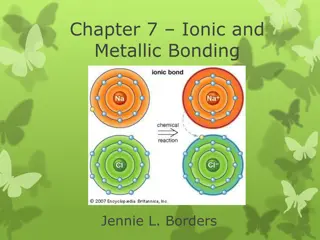Analysis of Electron Multiplication in Avalanche Gain Process
This report analyzes the phenomenon of electron multiplication in the avalanche gain process, specifically focusing on the gains and transparencies at different stages within the system. The study involves Gem foils and Polya distributions to understand the effective gains and transparency percentages associated with electron multiplication. Results are presented through plots depicting the avalanche sizes and profiles of zShift versus xShift.
Download Presentation

Please find below an Image/Link to download the presentation.
The content on the website is provided AS IS for your information and personal use only. It may not be sold, licensed, or shared on other websites without obtaining consent from the author.If you encounter any issues during the download, it is possible that the publisher has removed the file from their server.
You are allowed to download the files provided on this website for personal or commercial use, subject to the condition that they are used lawfully. All files are the property of their respective owners.
The content on the website is provided AS IS for your information and personal use only. It may not be sold, licensed, or shared on other websites without obtaining consent from the author.
E N D
Presentation Transcript
Work Report Miao Nannan 2017.11.23
Avalanche & Gain ? 1+?1+? 1+? ? ?0 ? ?0 P ? = ?0 ??? 1 + ? ----Polya Distribution The gain of electrons can be described by Polya distribution. (?0 is a constant ; ?0 is the average gain of a single electron; ? is a parameter which determines the variance of the distribution). 2
Avalanche & Gain ----Gem1 The produced electrons do not get through the Gem foil. Set an electron 2.25mm before the Gem1 foil and count multiplied electrons 150 m after the Gem1 foil. Then get the right plot Avalanche size. Effective gain: Number of multiplied electrons which can leave the Gem1 foil. It is sampled from a Polya. Transparency: The percentage of original electrons with whose multiplied electrons can leave the Gem1 foil, is about 86.90%. 3
Avalanche & Gain ----Gem2 The produced electrons do not get through the Gem foil. Set an electron 150 m after the Gem1 foil and count multiplied electrons 150 m after the Gem2 foil. Then get the right plot Avalanche size. Effective gain: Number of multiplied electrons which can leave the Gem2 foil . It is sampled from a Polya. Transparency: The percentage of original electrons with whose multiplied electrons can leave the Gem2 foil, is about 61.02%. 4
Avalanche & Gain ----Gem3 The produced electrons do not get through the Gem foil. Set an electron 150 m after the Gem2 foil and count multiplied electrons 150 m after the Gem3 foil. Then get the right plot Avalanche size. Effective gain: Number of multiplied electrons which can leave the Gem3 foil. It is sampled from a Polya. Transparency: The percentage of original electrons with whose multiplied electrons can leave the Gem3 foil, is about 61.30%. 5























